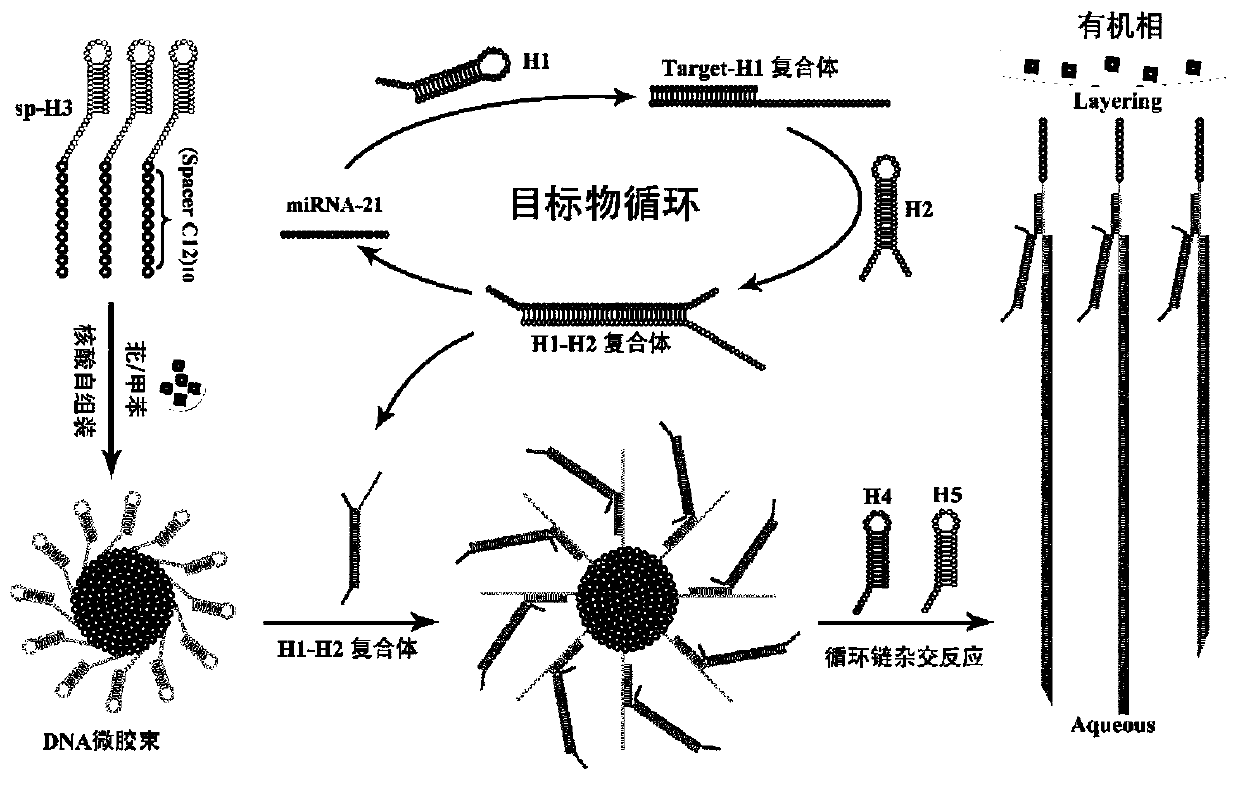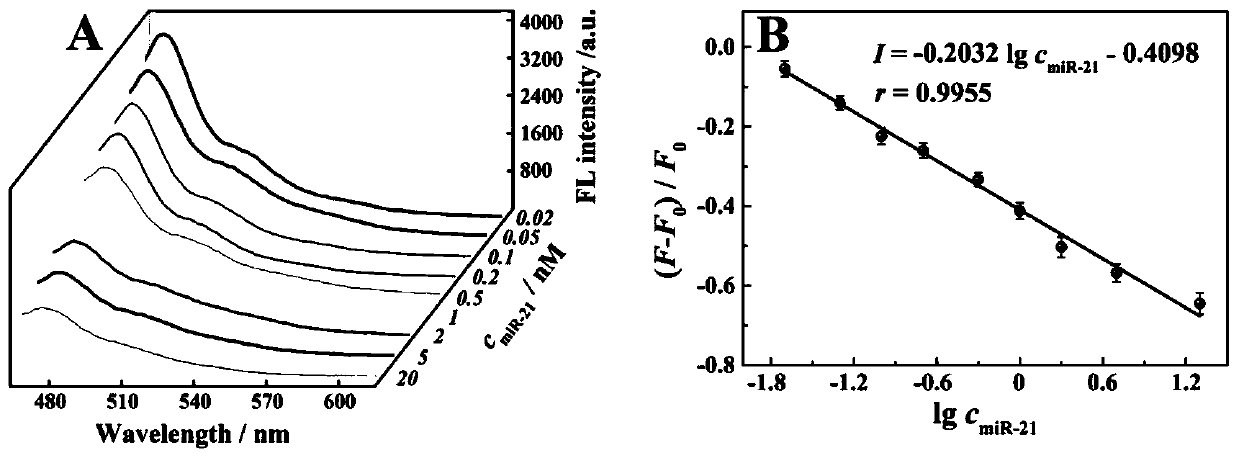Amphiphilic DNA nano-micelle and preparation method and application thereof
A nanomicelle, amphiphilic technology, applied in the field of biofluorescence analysis, can solve the problems of affecting the stability of the reaction system, limiting the application value, and unable to directly realize the specificity and quantitative detection of biomolecules. Selective, reproducible effects
- Summary
- Abstract
- Description
- Claims
- Application Information
AI Technical Summary
Problems solved by technology
Method used
Image
Examples
Embodiment 1
[0029] Preparation of Amphiphilic DNA Nanomicelles
[0030] In this example, the target miRNA is miRNA-21
[0031] 1) Design the specific DNA hairpin sequence H1-H5 (SEQ ID NO: 1-5) of the target miRNA-21, and modify the hydrophobic C12 alkane chain (Spacer C12) at the end of the H3 hairpin sequence by specific chemical coupling technology 10 , to obtain amphiphilic DNA copolymer sp-H3; synthesized by trivalent phosphorus chemical technology to obtain freeze-dried powder of H1, H2, H4, H5 and sp-H3.
[0032] 2) The preparation of the amphiphilic DNA copolymer sp-H3 dispersion with hairpin structure, the specific steps are as follows:
[0033] First, the sp-H3 freeze-dried powder was centrifuged at 12000r / min for 10min, and then dissolved in a solution containing Mg 2+ In the TE buffer, make it uniformly dispersed to obtain a sp-H3 solution with a concentration of 5nM. Then put the sp-H3 solution into 100 μL EP tubes, place it in a PCR instrument and incubate at 95°C for 10 ...
Embodiment 2
[0036] Label-free detection of miRNA-21 by amphiphilic DNA nanomicelles
[0037] The principle of label-free detection of miRNA-21 (SEQ ID NO: 6) by DNA nanomicelle is as follows figure 1 As shown, the amphiphilic DNA copolymer sp-H3 is obtained by modifying the hydrophobic C12 alkane chain at the end of the hydrophilic DNA, and the sp-H3 forms a hairpin structure for wrapping the fat-soluble dye perylene. The hydrophilic and hydrophobic interactions between them assemble into stable DNA nanomicelles. In the presence of the target miRNA-21, the catalytic hairpin self-assembly reaction (CHA) between DNA hairpins H1 and H2 is triggered to realize the recycling of trace targets, and at the same time export a large amount of H1-H intermediates; the intermediate The body can open the sp-H3 on the DNA nanomicelle, exposing the cohesive end of the sp-H3. Furthermore, the sticky end of sp-H3 can trigger the hybridization chain reaction (HCR) between H4 and H5, thereby enhancing the ...
PUM
 Login to View More
Login to View More Abstract
Description
Claims
Application Information
 Login to View More
Login to View More - R&D Engineer
- R&D Manager
- IP Professional
- Industry Leading Data Capabilities
- Powerful AI technology
- Patent DNA Extraction
Browse by: Latest US Patents, China's latest patents, Technical Efficacy Thesaurus, Application Domain, Technology Topic, Popular Technical Reports.
© 2024 PatSnap. All rights reserved.Legal|Privacy policy|Modern Slavery Act Transparency Statement|Sitemap|About US| Contact US: help@patsnap.com










